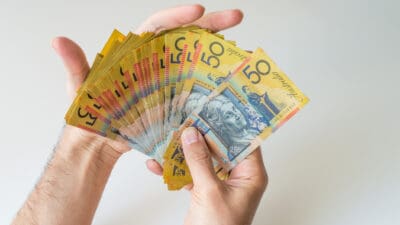Fans of the legendary American investor Warren Buffett might have heard of the 'Buffett indicator'.
It's a metric that Warren Buffett himself came up with a couple of decades ago and which he purportedly uses to judge the current investing climate. And right now, it appears to be flashing a violent shade of red.
What is the Buffett indicator?
Here's how it works. Buffett took the entire value of the US economy (or GDP) and compared it to the entire market capitalisation of the US stock market. This is presented in a percentage form.
If the size of the US stock market is equal to the size of the US economy, the Buffett indicator would sit at 100%. If the stock market's value was 80% of the economy, the Buffett indicator would be at 80%, and so on.
Buffett outlined this concept in a 2001 essay in Fortune Magazine. Here's some of what he said back then:
[The indicator] shows the market value of all publicly traded securities as a percentage of the country's business – that is, as a percentage of GNP [a near equivalent of GDP].
The ratio has certain limitations in telling you what you need to know.
Still, it is probably the best single measure of where valuations stand at any given moment…
He went on to explain:
For investors to gain wealth at a rate that exceeds the growth of US business, the percentage relationship line on the chart must keep going up and up. If GNP is going to grow 5% a year and you want market values to go up 10%, then you need to have the line go straight off the top of the chart. That won't happen.
For me, the message of that chart is this: If the percentage relationship falls to the 70% or 80% area, buying stocks is likely to work very well for you. If the ratio approaches 200% – as it did in 1999 and a part of 2000 – you are playing with fire.
Now Buffett, of course, came up with this metric for use in analysing the American stock market. But the concept can easily be exported to the Australian economy and the ASX.
The Australian edition
As it happens, the Buffett indicator, Australian edition, has been rising for more than a decade. According to data from S&P Market Intelligence and the Australian Bureau of Statistics (ABS), the entire market capitalisation of the Australian stock market compared to Australia was sitting at 110.4% back in 2013. But it has been rising almost every year since. By 2015, it was at 136.2%, and 172.7% by 2018.
The Buffett indicator took a bit of a hit during the COVID-ravaged 2020 and fell to 169.2%. But by 2022, it was back to 173%. Today, it sits at a whopping 194.6%.
So does this mean that anyone who is still invested and not selling out of all of their ASX shares right now is "playing with fire", as Buffett warned all those years ago?
Should we sell our ASX shares right now, then?
Well, I think not. I don't pretend to be in a position to call out Warren Buffett on anything. But what I do know is that there is always a reason to avoid investing. Fear of recessions, inflation, pandemics, you name it.
I also know that the stock market rises far more often than it falls and has never failed to exceed a previous all-time high. Sure, there will be market corrections and crashes down the road. But there will also be bull markets and new all-time highs.
What's more, this Buffett indicator is a rather blunt tool. It takes the valuation of the entire stock market amount, not of individual shares. So while some shares might become overvalued, it doesn't necessarily mean that all shares are.
Plus, for all we know, Buffett may not even use the 'Buffett indicator' anymore. It's been more than years since he first discussed it, and has (to this writer's knowledge) barely mentioned it since.
All in all, the Buffett indicator is certainly an interesting metric. But it's not one that has convinced me to abandon my long-term investing strategy.









